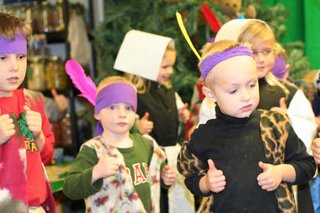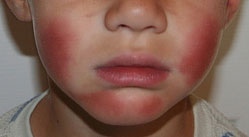
It’s been a marathon race from Wednesday evening to today with no end in sight. With company, it’s always an adventure in coming and going, arriving and leaving, meals, laundry, and of course kids. We’ve had more people in and out of our house than ever before. There were so many for dinner on Thursday, we ate most of the bird.
We were honored to have one of Anne’s friends as a guest, Amir. He was most welcome as he plunged into American food. He didn’t like my cranberry/tangerine relish, but he said some of the tastes were similar to what he eats at home.
This afternoon, Mr. Robbie will be baptized at St. Ben’s after the 4:30 Mass. It’s an exciting time for us.
I hope everyone had an especially nice Thanksgiving. The weather sure has been nice. I hope the kids got some play time and explored the Thanksgiving table with gusto! My grandchildren went to the Zoo. They said it was cooler over there than here in Newburgh.
Next week in school some afternoon changes in the day. We are introducing some new subjects we think the kids will just love. The children will be divided into two groups, the St. Scholastica group and the St. Benedict group for these classes.
As we explore these changes, parents will be notified in letter and on the blog about what we’ve done and what we will be doing permanently. Our goal is to touch every educational base we can every week. Some classes will be team taught, other classes will be individually taught.
It’s been asked that we post menus. We post a general menu and have asked for parents’ input for several months. Please look at the menu posted on the door. Often it’s not known what’s for lunch absolutely until that day. If I plan absolutely for one thing or another on Sunday, and someone brings us a present, or there’s a better plan on Wednesday, we’ll go with it. Menus will be posted on the blog after the fact. If any parent wants to know what we have eaten, what we generally eat, what the kids like best, please ask me.











